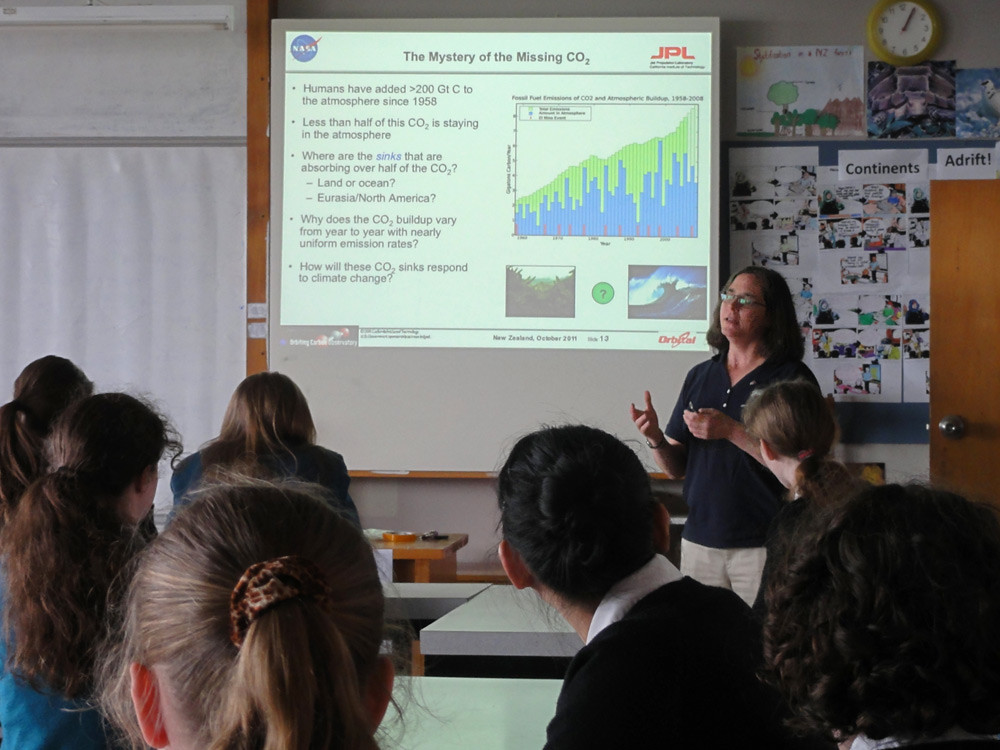
Greenhouse Gases
Climate Change Indicators: Greenhouse Gases
A greenhouse gas is a gas that absorbs and emits radiant energy in the thermal infrared range, causing the greenhouse effect. The primary greenhouse gases in the Earth’s atmosphere are water vapor, carbon dioxide, methane, nitrous oxide, and ozone. Without greenhouse gases, the Earth’s average surface temperature would be about -18°C, rather than the current average of 15°C. The atmospheres of Venus, Mars, and Titan also contain greenhouse gases.
Human activity has increased the atmospheric concentration of carbon dioxide by more than 50% since the beginning of the Industrial Revolution, from 280 ppm in 1750 to 421 ppm in 2022. The last time the concentration of carbon dioxide in the atmosphere was this high was more than 3 million years ago before. This increase occurred despite the absorption of more than half of the emissions by various natural carbon sinks in the carbon cycle.
At current rates of greenhouse gas emissions, temperatures could rise by 2°C, the upper limit for avoiding “dangerous” levels, according to the UN Intergovernmental Panel on Climate Change, by 2050. The vast majority of anthropogenic carbon dioxide emissions come from burning fossil fuels, mainly coal, oil, and natural gas, with additional contributions from cement production, fertilizer production, deforestation, and other land use changes. In today’s world, the United States Environmental Protection Agency estimates that 27% of all US greenhouse gas emissions are related to transportation.
Why is it important?
As greenhouse gas emissions from human activities increase, they accumulate in the atmosphere and warm the climate, leading to many other changes around the world – in the atmosphere, on land, and in the ocean positive. Indicators in other chapters of this report illustrate many of these changes, which have both positive and negative impacts on people, society, and the environment – including plants and animals. Because many of the major greenhouse gases remain in the atmosphere for tens to hundreds of years after they are released, their warming effects on the climate persist for a long time and can therefore affect both present and future generations.
Summary of Key Points US
- Greenhouse Gas Emissions.
In the United States, greenhouse gas emissions caused by human activities have decreased by 7% between 1990 and 2020. However, since 2005, total US greenhouse gas emissions have decreased by 20%. Carbon dioxide accounts for the majority of the nation’s emissions and has largely declined since 1990. Transportation is the largest source of greenhouse gas emissions in the United States, followed by electricity generation. Emissions per capita have fallen slightly over the past few years.
Data source on US greenhouse gas emissions. The EPA has two main programs that provide data on greenhouse gas emissions in the United States: the U.S. GHG Emissions and Absorption Inventory and the Greenhouse Gas Reporting Program. The programs complement each other, providing both a higher-level view of the country’s total emissions and detailed information on the sources and types of emissions from individual facilities.
Worldwide, net emissions of greenhouse gases from human activities increased by 43 percent between 1990 and 2015. Carbon dioxide emissions, which account for about three-quarters of all emissions, increased by 51 percent. during this period. Like the United States, most of the world’s emissions come from transportation, electricity generation, and other forms of energy production and use.

Concentrations of carbon dioxide and other greenhouse gases in the atmosphere have increased since the beginning of the industrial era. Almost all of this increase is due to human activities. Historical measurements show that global atmospheric carbon dioxide concentrations today are unprecedented compared with the past 800,000 years, even after natural variations are taken into account.
Climate pressure refers to a change in the Earth’s energy balance, resulting in a warming or cooling effect over time. An increase in the concentration of greenhouse gases in the atmosphere creates a positive climate promotion or warming effect. Between 1990 and 2019, the total warming effect from man-made greenhouse gases added to Earth’s atmosphere increased by 45%. The carbon dioxide-related warming product alone increased by 36 percent.
Sources of data on US greenhouse gas emissions
The EPA has two main programs that provide data on greenhouse gas emissions in the United States: the U.S. GHG Emissions and Absorption Inventory and the Greenhouse Gas Reporting Program. The programs complement each other, providing both a higher-level view of the country’s total emissions and detailed information on the sources and types of emissions from individual facilities. The data in the EPA’s US GHG Emissions index comes from the national archives.
EPA inventory of greenhouse gas emissions and sequestration
The EPA develops an annual report called the U.S. Greenhouse Gas Emissions and Intakes Inventory. This report tracks trends in total annual U.S. emissions by source, economic sector, and greenhouse gases since 1990. EPA uses national energy data, data on agricultural activities, and data on national and other national statistics to provide a comprehensive inventory of total greenhouse gas emissions for all man-made sources in the United States. This inventory meets the country’s obligation to provide annual emissions reports under the United Nations Framework Convention on Climate Change.
EPA Greenhouse Gas Reporting Program
Since 2010, the EPA’s Greenhouse Gas Reporting Program has collected annual emissions data from industrial sources that directly emit large amounts of greenhouse gases. Generally, facilities that emit more than 25,000 tons of carbon dioxide equivalent per year are required to report. The program also collects data from entities known as “suppliers” that supply certain fossil fuels and industrial gases that will release greenhouse gases into the atmosphere if burned or released—for example, Refineries provide petroleum products such as gasoline. The GHG Reporting Program only requires reporting; It is not an emissions control program. This program helps the EPA and the public understand where greenhouse gas emissions come from and will improve our ability to make informed policy, business, and regulatory decisions.
Weather 01852 - Lowell MA

56°
mist
Feels like 55°05:30/19:53
60°F
/53°F
81%
999 hPa
7 mi
6.91 mph



